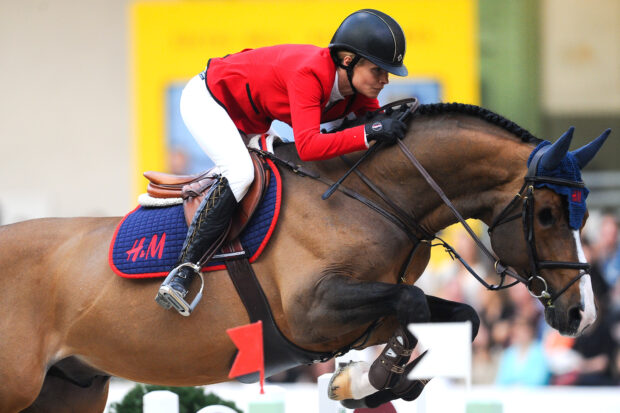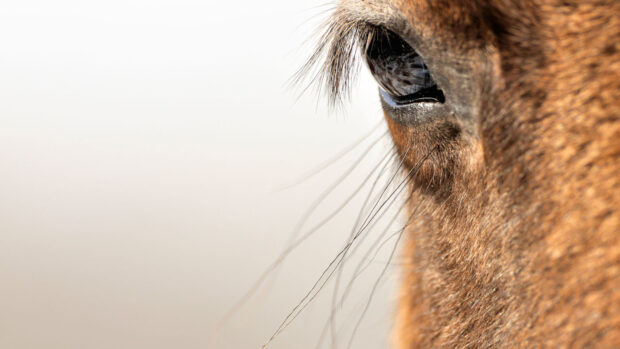More advice on exercising your horse
Q: I saw Izzy Taylor eventing her horse Briarlands Blackberry whom I understand only has one eye.
The horse has competed at four-star level — what is it like to care for and ride a horse that is blind in one eye?
RP, Worcestershire
According to vet Deborah Pett MRCVS of Cinder Hill Equine Veterinary Clinic in Sussex, if the horse has its head pointing forward, its visual field extends approximately 350°, with small blind spots immediately behind the animal and in front of the nose.
“Each eye is believed to have a visual field of up to 215° (against 150° for humans), which is why horses blind in one eye cope incredibly well, following a period of adaptation,” Deborah explained.
“This will be obvious if the sight is lost suddenly, for example following ocular trauma, although blindness may go unnoticed if the sight is gradually lost over a prolonged period.
“In situations where a horse has to have an eye surgically removed but some sight is remaining, a fly mask with a patch over the affected eye can be worn to encourage adaptation.
“In the early stages of visual impairment in one eye, we advise approaching horses from their visual side, so as not to surprise them,” she said.
“They will also be less likely to bump into things if you avoid clipping the whiskers on their muzzle. When riding, allow the horse to turn his head, if necessary, to see where strange sounds are coming from. Remember that a horse blind in his right eye [offside] can’t see traffic approaching from behind when out hacking, which may cause spooking.
“The loss of vision in one eye also gives reduced depth perception, which has implications in the performance horse, particularly for jumping; although jumping horses with impaired vision are not uncommon,” said Deborah.
“A horse does not rely entirely on binocular vision for depth perception, but also uses visual cues from its surroundings.”
Izzy Taylor took over the ride on Briarlands Blackberry two years after he lost his eye and says it makes no difference to the way she competes.
“Sat on top, you wouldn’t know he only had one eye,” she said. “The only time I have suspected it affected him was at Bramham when, unusually for him, he had a run-out at a coffin with a slanting rail on his blind side.”
The Suzy Smith-trained hurdler Material World won five races, despite losing an eye as a result of an accident on the gallops. The horse began hanging right later in her career, but whether this was due to soreness, was psychological, or was a trait she developed as a result of only having one eye, it was never discovered.
Alayne Marker and Steve Smith run the Rolling Dog Ranch Animal Sanctuary in Montana, USA, rescuing disabled animals.
Alayne explained: “How a horse adapts to being one-eyed has everything to do with his personality, not the loss of the eye itself. A naturally highly strung or spooky horse may become more so after losing an eye but generally, the passage of time is what really helps an animal adapt.”
Information
• Cinder Hill Equine Veterinary Clinic www.cinderhillequinevets.co.uk
• Rolling Dog Ranch Animal Sanctuary www.rollingdogranch.org
• www.blindhorses.org
This Q&A was first published in Horse & Hound (26 March, ’09)
Looking for advice on exercising your horse?



